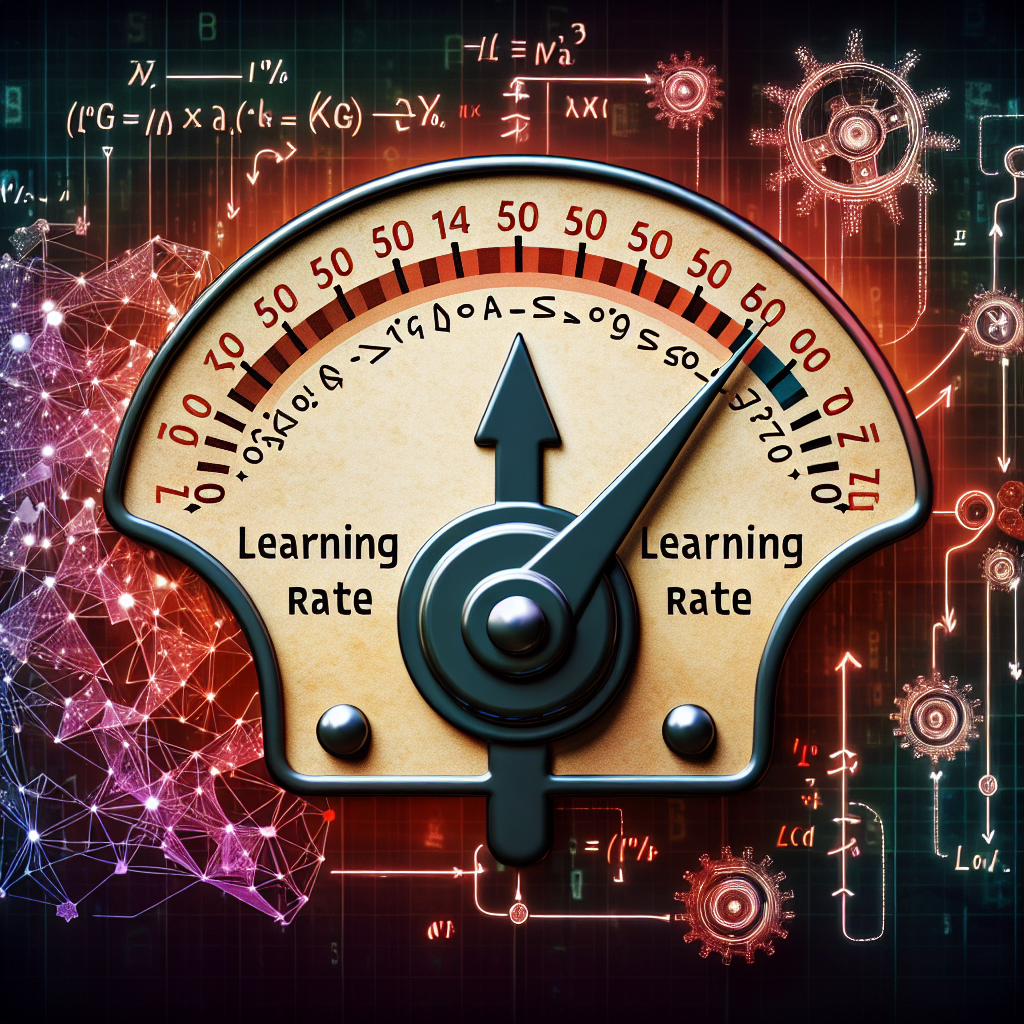In the realm of machine learning, the learning rate is a critical factor. It determines how quickly or slowly a model learns from data.
Yet, finding the right learning rate is often a challenge. Set it too high, and your model may fail to converge. Set it too low, and training could take an eternity.
This article aims to guide you through this complex task. We'll delve into the concept of learning rate, its importance, and how to adjust it for optimal model performance.
We'll also explore tools like PyTorch Lightning's learning rate scheduler and DreamBooth's approach to learning rate settings. These insights will help you navigate the learning rate landscape with confidence.
Whether you're a seasoned data scientist or a budding AI researcher, this guide will equip you with practical tips to find the right learning rate for your models. Let's embark on this journey to better machine learning outcomes.
Understanding the Learning Rate in Machine Learning
In machine learning, the learning rate is a key hyperparameter. It controls how much a model adjusts in response to the error it sees at each step of the learning process.
Think of it as a step size. If you're climbing down a hill and each step represents an iteration of training, the learning rate determines how big or small your steps are.
A high learning rate means taking larger steps. This could lead to overshooting the minimum point of the error function.
A low learning rate implies smaller steps. While this might ensure you don't miss the minimum, it could also mean a longer journey.
The learning rate is part of the optimization algorithm, such as Stochastic Gradient Descent (SGD). It influences how the weights in the model are updated during training.
Finding the right balance is crucial. It's about setting a learning rate that allows your model to learn effectively without taking too much time or missing the mark. This balance is what we aim to help you achieve in this guide.
The Significance of Learning Rate in Model Training
The learning rate plays a pivotal role in model training. It directly impacts the speed and quality of learning. A well-tuned learning rate can lead to a model that learns quickly and accurately.
However, setting the learning rate is not a one-size-fits-all task. It depends on various factors, including the complexity of the model, the size of the dataset, and the specific optimization algorithm in use.
A poorly chosen learning rate can lead to problems. If it's too high, the model might fail to converge or even diverge. If it's too low, the model might take too long to learn or get stuck in a suboptimal solution.
Therefore, understanding and adjusting the learning rate is a critical step in the machine-learning process. It can significantly improve the performance of your models and the efficiency of your training process.
Common Challenges with Learning Rate Settings
Setting the learning rate is not without its challenges. One common issue is the trade-off between speed and accuracy. A high learning rate may speed up training, but it can also cause the model to overshoot the optimal solution.
On the other hand, a low learning rate can lead to more precise learning. However, it may also cause the model to get stuck in a suboptimal solution or take an excessively long time to train.
These challenges highlight the importance of finding the right balance when setting the learning rate. It's a delicate task that requires careful consideration and experimentation.
PyTorch Lightning and Learning Rate Scheduling
PyTorch Lightning is a popular framework for deep learning. It simplifies the process of training complex models, including the task of setting the learning rate.
One of the key features of PyTorch Lightning is its learning rate scheduler. This tool allows you to adjust the learning rate dynamically during training. It can be a powerful ally in finding the right learning rate for your model.
The scheduler supports various strategies, such as step decay, exponential decay, and cyclical learning rates. These strategies can help you navigate the trade-offs between speed and accuracy.
Here are some of the strategies supported by PyTorch Lightning's learning rate scheduler:
Step decay
Exponential decay
Cyclical learning rates
In the following sections, we will delve deeper into how to use these strategies effectively.
DreamBooth: Customizing Learning Rate for Specialized Models
DreamBooth is another platform that offers unique ways to adjust the learning rate. It is particularly useful for specialized models that require fine-tuning.
The platform provides a range of tools to help you experiment with different learning rates. It also offers insights into how these changes impact your model's performance.
By leveraging DreamBooth's features, you can gain a deeper understanding of your model's learning process. This can guide you in finding the optimal learning rate for your specific use case.
Practical Tips for Finding and Adjusting Your Learning Rate
Finding the right learning rate is not a one-size-fits-all process. It requires a good understanding of your model and the problem you're trying to solve.
Here are some practical tips to guide you:
Start with a small learning rate and gradually increase it until the loss starts to explode.
Use a learning rate schedule that gradually decreases the learning rate as training progresses.
Experiment with different learning rate schedules and observe their impact on model performance.
Monitor the loss curve closely. If it's too noisy, the learning rate might be too high. If it's too smooth, the learning rate might be too low.
Don't be afraid to experiment. The optimal learning rate can vary significantly depending on the model and the dataset.
Using Learning Rate Schedulers
Learning rate schedules are tools that adjust the learning rate during training. They can be particularly useful when dealing with large and complex datasets.
By using a learning rate scheduler, you can ensure that your model learns effectively throughout the entire training process.
The Learning Rate Finder Tool
The Learning Rate Finder is a tool that can help you find the optimal learning rate for your model. It works by training the model with increasing learning rates and plotting the loss.
By analyzing the plot, you can identify the learning rate that minimizes the loss.
Adaptive Learning Rates and Modern Optimizers
Modern optimizers like Adam and RMSprop use adaptive learning rates. These optimizers adjust the learning rate for each weight in the model based on the gradients.
Adaptive learning rates can be a powerful tool for optimizing your model, especially when dealing with complex and high-dimensional datasets.
Monitoring and Interpreting Model Performance
Monitoring model performance is crucial when adjusting the learning rate. Keep an eye on the loss curve and validation metrics throughout the training process.
Interpreting these metrics correctly can provide valuable insights. It can help you understand whether your learning rate adjustments are improving the model's performance or not.
Balancing Speed and Accuracy
Finding the right learning rate is a balancing act. It's about achieving the best possible model accuracy without sacrificing training speed.
Remember, patience and iteration are key. Don't be afraid to experiment and learn from each training run. Your perfect learning rate is out there, waiting to be discovered.












.jpg)

.jpg)


0 Comments